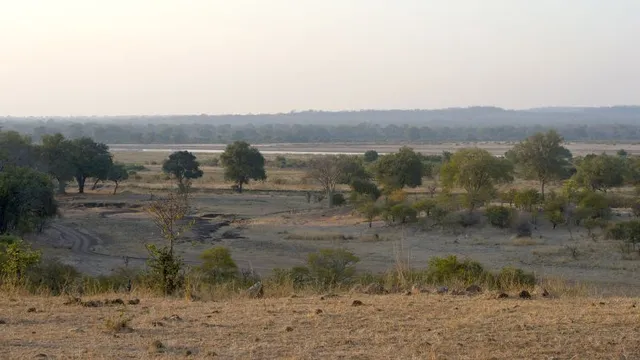
Two tourists killed after elephant attack in Zambian national park
2025-07-04 07:10- Two elderly women were killed by a female elephant while on safari in Zambia.
- The elephant was with a calf and charged at the tourists despite attempts by guides to stop it.
- This incident underscores the risks involved in wildlife tourism and the need for better safety measures.
Express your sentiment!
Insights
In a tragic incident in Zambia, two elderly female tourists were killed by an elephant while participating in a walking safari. The event took place at South Luangwa National Park, located approximately 600 kilometers from Lusaka, the capital city of Zambia. The victims were identified as 68-year-old Easton Janet Taylor from the United Kingdom and 67-year-old Alison Jean Taylor from New Zealand. They were attacked by a female elephant that was with its calf, demonstrating the aggressive protective behavior often exhibited by female elephants in the wild. Safari guides who were accompanying the group attempted to intervene by firing shots at the elephant in an effort to stop it from charging at the women. Despite their efforts, the guides were unable to prevent the attack, and both women tragically died at the scene. This incident highlights the inherent risks associated with wildlife tourism, particularly in regions where elephants are present. Female elephants are known to be fiercely protective of their young and can perceive human presence as a threat, leading to aggressive behavior. The situation is exacerbated by tourists often finding themselves in close proximity to these wild animals, especially during walking safaris. The deaths of these tourists follow a worrying trend of fatal encounters between elephants and tourists in Zambia, which has seen similar incidents in recent years. Last year, two American tourists were also killed by elephants in separate incidents while on safari. These events raise questions about the safety protocols in place during wildlife encounters and the need for greater awareness of wildlife behaviors among tourists. Authorities in Zambia are called to examine safety regulations to ensure that both tourists and wildlife can coexist with less risk. The complexities surrounding wildlife tourism and the behaviors of animals in their natural habitats remain critical issues for the industry. Educating tourists about how to behave around wildlife, the importance of maintaining a safe distance, and understanding elephant behaviors could potentially mitigate future incidents. As tourism in Zambia continues to grow, the pressing need for an ethical approach towards wildlife interactions becomes evident, ensuring responsible tourism while protecting both visitors and native wildlife alike.
Contexts
Wildlife tourism has grown significantly in recent decades, becoming a major industry that offers both economic benefits and environmental challenges. The interaction between humans and wildlife in tourism settings can lead to profound impacts on animal behavior. Tourists often seek opportunities to observe wildlife in their natural habitats, which can create disturbances and alter the behavioral patterns of the species being observed. Animals may exhibit changes in their feeding, mating, and migration behaviors in response to the presence of tourists, which can have long-term consequences for their survival and reproduction. Increased human activity can lead to habitat degradation, stress in animals, and increased vulnerability to poaching and other human-related threats. The presence of tourists can lead to changes in prey and predator dynamics, as animals may become accustomed to human presence and lose their natural wariness of potential threats. For instance, some species may alter their foraging behavior, spending more time in open areas to accommodate tourist activities, which could expose them to higher predation risks. Additionally, wildlife may be driven to abandon traditional nesting or breeding sites due to increased disturbances from human interactions, resulting in diminished reproductive success. Such changes over time can lead to shifts in population dynamics, potentially altering the broader ecosystem. While wildlife tourism can generate economic revenue and encourage conservation efforts, it is crucial to implement responsible and sustainable practices to minimize negative impacts on animal behavior. Initiatives such as guided tours that respect animal habitats, the establishment of wildlife reserves, and regulations on tourist access can help mitigate disturbances. Furthermore, educating tourists about the importance of observing wildlife from a distance and minimizing noise can also play a significant role in preserving animal behaviors and habitats. Collaboration between tourism operators, conservationists, and local communities is essential for developing strategies that effectively balance human enjoyment of wildlife with the need to protect these animals. In conclusion, the impact of wildlife tourism on animal behavior is a complex issue that requires careful consideration of both the benefits and the potential detriments. The challenge lies in fostering an industry that respects wildlife and their habitats while still allowing for meaningful human engagement with nature. Through responsible tourism practices, the positive aspects of wildlife tourism can be harnessed, ensuring that wildlife populations are not adversely affected and that ecosystems remain resilient. As the industry continues to evolve, ongoing research and adaptive management will be vital in addressing the dynamic interactions between wildlife tourism and animal behavior.